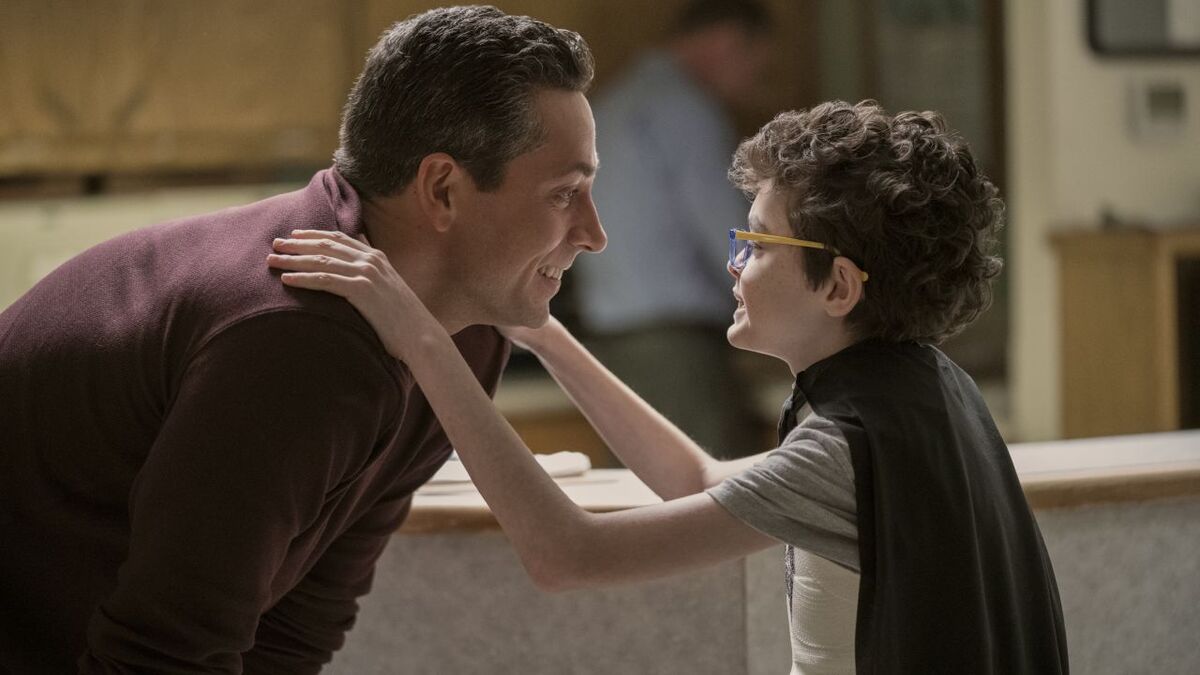
A good TV show needs to make every detail count. The characters, locations, and language are all in service of creating a greater whole, so you can’t afford to take anything for granted. A chemistry analogy would probably work best for describing the careful balance of products and reactants that gets narrative-driven shows like Breaking Bad into TV’s Greatest Ever pantheon, but most serialized dramas treat the process more like Lego: you need to plan far, far ahead, play by the rules, and be sure that every brick, no matter how seemingly insignificant, goes exactly where it should. Otherwise, you risk finding yourself with a puzzle-built plot that’s missing a piece. This has left the recent TV landscape awash with shows built around carefully plotted mysteries, or orchestrated by impossibly foresighted masterminds, and it’s with rare exception that these shows actually feel like they’re doing anything other than following an instruction manual.
Though based on a book of the same name, Orange is the New Black, Netflix’s prison-based breakout hit, didn’t come with an instruction manual. Its utterly fantastic first season built an entire ecosystem around its deep, unique, and loveable cast of misfits, instead of some single all-encompassing narrative. The just released second season sees that ecosystem growing wildly off of the first season’s success, whether laying down stronger roots in established places, or venturing boldly into previously uncharted territory. Thanks to the fullest, best ensemble on TV, it’s a storytelling approach that’s just as engaging in its second year as it was in the first. But it’s also gotten looser too, expanding the boundaries the show has set for itself in ways that prove thought provoking, surprising, and sometimes frustrating.
The Wire, the HBO drama series bandied around (by people like me) as being the best show ever made, made a motto out of what’s become the most commonly accepted truism to making a great TV show: all the pieces matter. For The Wires and Breaking Bads of the world, it’s difficult to identify a single component that felt out of place, or unnecessary to forming the airtight narrative and defined subtext they are remembered for. Orange is the New Black, on the other hand, is anything but airtight, yet the same truism applies just as well. All the pieces matter in Orange is the New Black -they just matter in ways that are different from what we’ve come to expect out of TV.
Rather than settling for the usual conventions of prison dramas, Orange is the New Black spent its first season exploring the inner and former lives of its inmates, presenting prison culture as being just as informed by the racial, economic and class environments the convicts had been transplanted from, as it is the byproduct of their time spent isolated from society. It developed many memorable initial pairings and relationships within these confines over 13 hours, but as those dynamics grow and change throughout the second season, pieces previously kept apart find unexpected ways of coming together, and ones that seemed well-worn take on new shapes and contours.
The show evolves along with its characters, for good and for ill, because while their surroundings may be static, the inhabitants of Litchfield Correctional themselves are capable of immense change. This distinguishing feature is almost certainly the reason why Orange is the New Black unexpectedly became Netflix’s flagship series, instead of the zombified Arrested Development, or the overly familiar antihero drama, House of Cards. While viewers knew what to expect from those more hotly-anticipated programs, Orange is the New Black crackled and squealed with the pleasing sounds of an unfamiliar mixture: a predominantly female, racially diverse cast of mostly unknowns, all forced together in the same pressure-cooker of a prison, and guided by the steady hand of Weeds-creator Jenji Kohan.










Published: Jun 6, 2014 10:02 pm